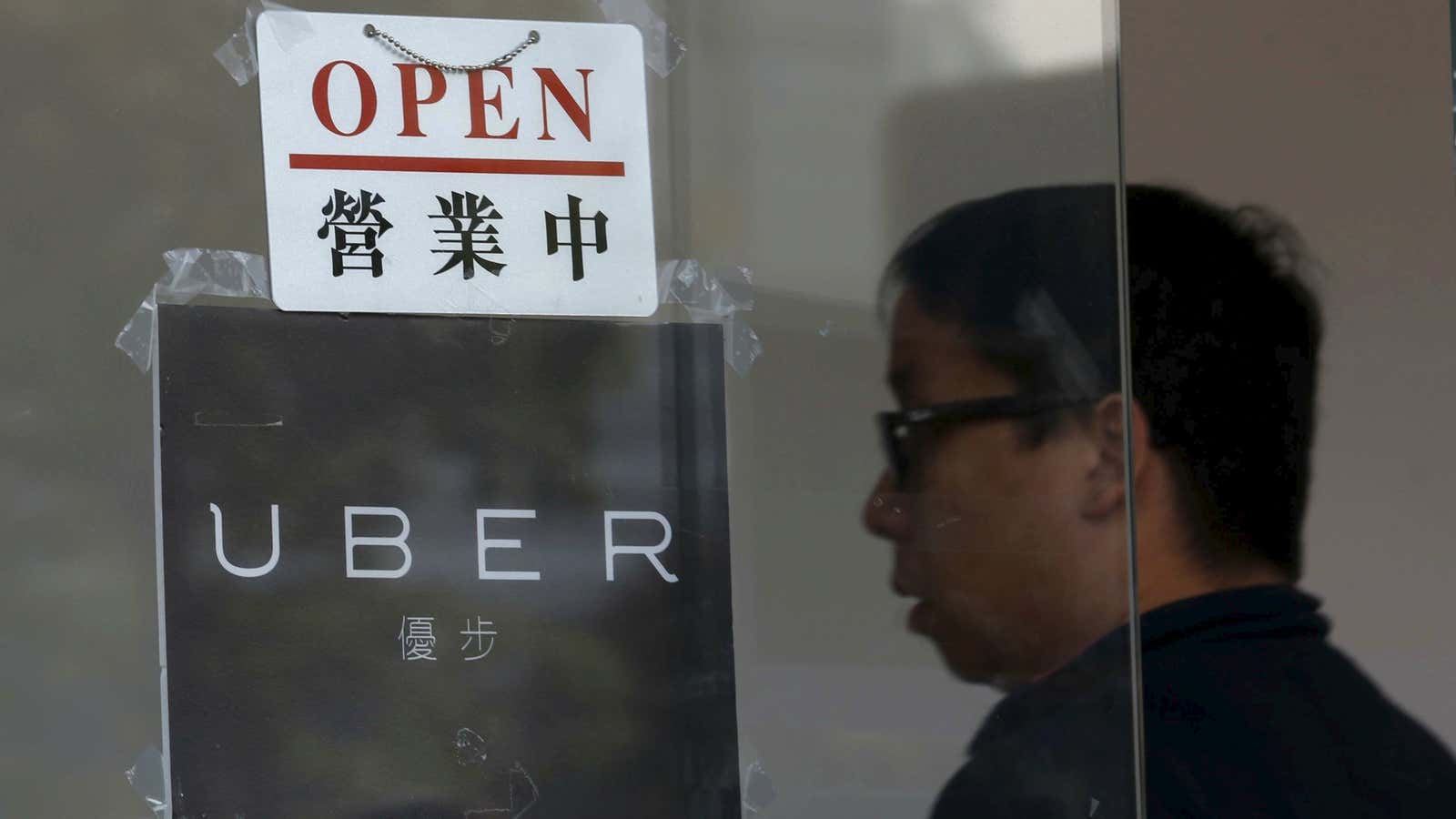Uber often brags that hailing an UberX is “cheaper than a taxi.” But in Hong Kong, that’s no longer necessarily the case.
The ride-hailing company announced today a significant price hike in Hong Kong that raises minimum fares by as much as 80%. Going into immediate effect, the price hike creates a rare situation in which hailing an UberX (Uber’s standard, lowest-cost tier) becomes more expensive than taking a cab.
Before the hike, UberX rides began at a minimum fare of HK$30 ($3.83) if hailed from Hong Kong Island, and HK$25 ($3.20) if hailed from the less affluent Kowloon or New Territories. Now, all rides begin with a minimum fare of HK$40, with an additional booking fee of HK$5, bringing the total minimum fare to HK$45 ($5.75). Once a certain threshold of time and distance is hit, Uber will charge HK$6 per km and HK$1 per minute on top of that.
Taxis, meanwhile, start rides at the base fare of HK$24 ($3.07), and then HK$1.70 after every 200 meters or 1 minute in traffic. In short, while longer rides will likely be priced roughly the same between the two services, shorter rides will be more expensive when hailed via Uber.
Typically, Uber tries to set rides hailed on UberX at around 0.75 times the price of a ride hailed through a municipal taxi. Within the past year, though, the company started raising prices in various markets, often by adding booking fees or slashing its discounts. That’s likely due to pressure on the company’s bottom line, coupled with various market-specific factors like increased taxes (in the US and UK, for example) and irate drivers.
In Hong Kong, one additional reason behind the fare hike could stem from the company’s tussle with the local government, which faces pressure from the taxi lobby to crack down on Uber. In May, police arrested 22 Uber drivers on suspicion of ferrying passengers for money without the proper permit or insurance. Those arrests followed a court ruling in March that convicted three Uber drivers on similar charges. Despite these crackdowns, the company continues to serve consumers largely without issue—making the city an outlier in East Asia.
Uber in Hong Kong has no serious local rivals offering app-based ride-hailing. As a result, it has slightly more leeway to raise prices than in Southeast Asia and India, where it faces steep competition from rivals Grab and Ola, respectively. It’s also possible its dressed-up, travel-bound clientele on Hong Kong Island will be relatively insensitive to a price increase.
Still, breaking so drastically with one of its core tenants of pricing suggests that the company is facing more pressure to rein in its cash-burning habits, and also keep its drivers happy.
